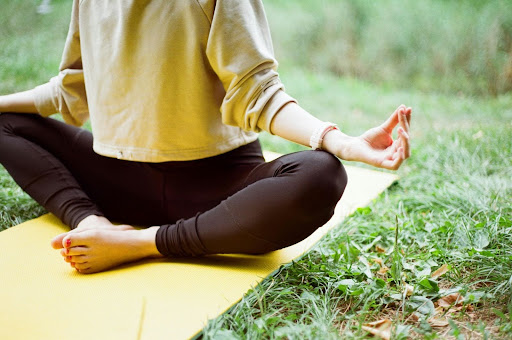Stress doesn’t just live in your head; it settles into your body, reshaping how you breathe, your heartbeat, and even how your cells function. Over time, chronic stress can leave a trail of physical symptoms: tight shoulders, restless sleep, digestive issues, and a racing mind that won’t turn off. But the body also holds the key to healing.
Through yoga, breath-work, and stress management services, we can start to untangle that tension and guide the nervous system back into balance. We will explore how stress physically manifests in the body, and how holistic practices like yoga can help you reclaim calm, strength, and resilience from the inside out.
How Stress Manifests in the Body
There is something in your brain called the ‘HPA axis’. The HPA axis is the path from the hypothalamus to the pituitary gland to the adrenal glands. When stressed, your brain triggersa response series that runs through the HPA axis. This area controls the release of cortisol, one of the most vital stress hormones, produced at the end of the response series.
In the short term, acute stress can help you in an emergency. The increased heart rate allows more oxygen to flood your muscles, dilated pupils improve vision, glucose release allows for quick energy, and blood is directed away from the gut to slow digestion. In a fight-or-flight situation, this response will save you, but prolonged high cortisol can bring a new set of problems.
Long-Term Effects of Prolonged Cortisol and Inflammation Can Cause:
- Immune Suppression: Cortisol lowers the function of your immune system. This can cause more frequent illnesses and slower healing.
- Brain Changes: The hippocampus, responsible for memory and learning, shrinks. The amygdala, responsible for anxiety and fear, is overstimulated. The prefrontal cortex is also impacted, which is responsible for decision making and impulse control.
- Heart & Blood Pressure: Chronic stress increases the risk of hypertension, stroke, and heart disease, while a higher BP and heart rate wear the arteries.
- Digestive System: Cortisol causes changes to gut bacteria and inflammation levels, leading to IBS, acid reflux, and ulcers.
- Hormonal Imbalance: Sleep, fertility, blood sugar regulation, and the thyroid are all thrown off. This can increase the risk of diabetes.
- Cellular Aging: The protective ends of DNA are called telomeres, which are shortened by stress. This is associated with early aging and increased disease risk.
Stress Management Tips
Regular physical activity offers a powerful way to manage stress, with benefits beyond simply feeling good. Exercise, yoga, and deep breathing can trigger the release of endorphins, improve sleep quality, and boost overall well-being. These practices help alleviate stress in the short term and support your body to handle stress more effectively in the long run. Let’s dive into the specific benefits of each and explain some tips for incorporating them into your daily routine.
Exercise
While it may seem too simple, any form of exercise can lower your stress levels due to the release of endorphins it causes. Exercise can mean anything from walking around your neighborhood to a full-blown cycling class.
To incorporate exercise into your daily routine, try and find exercise that is exciting and doesn’t feel like a chore. Changing your mindset around working out can help you want to do it more often. The relief your body can feel will encourage you to continue. Two ways to incorporate exercise into your daily routine are to walk when and where possible and to put in extra work when deep cleaning. The little movements count!
Yoga
Classes for yoga are available in a range of areas. At Bespoke Wellness, we host vinyasa, therapeutic, and hatha yoga classes. In these classes, we focus on breathing techniques that help reduce the effects of stress. To incorporate this into your daily routine, sign up for a Zoom yoga class. This accessible class allows you to practice wherever, without the anxiety some experience in a public setting.
Deep Breathing
Deep breathing and guided breathing exercises are integral to yoga. However, you can also practice breathing techniques outside of yoga. One common breathing exercise is the “In 2, 3 Out 2, 3” technique. This can help reduce stress and calm your nervous system. Here’s how it works:
- Inhale through your nose for a count of 2 seconds.
- Hold your breath for a count of 3 seconds.
- Exhale slowly through your mouth for a count of 3 seconds.
- Repeat until calm
Other guided breathing exercises can be found on YouTube for a quick addition to your daily routine.
Alameda Stress Relief
Now that you know the ins and outs of chronic stress’s impact on your body and how you can heal it, it’s time to take the next steps. Reserve your spot in one of our Zoom fitness classes to begin developing habits for processing stress!


